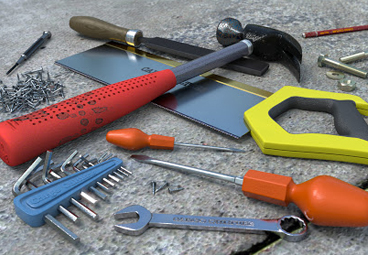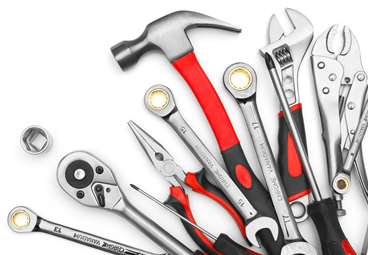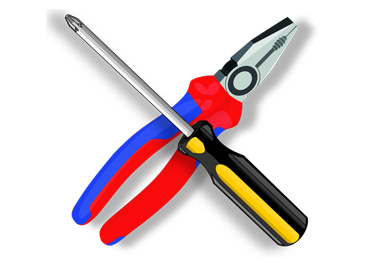- A-6, Main Service Road,New Usmanpur, North East Delhi - 110053
- Mon - Sat: 10am - 06pm
- +91 9318408585
Top 5 Industrial Tool Trends to Watch in 2025

Top 5 Industrial Tool Trends to Watch in 2025
The industrial tools sector is evolving rapidly, driven by technological advancements, sustainability initiatives, and the increasing need for efficiency. As we move into 2025, several key trends are shaping the future of industrial tools. In this blog, we will explore the top five trends businesses should watch to stay ahead in the industry.
1. Integration of Artificial Intelligence (AI) in Manufacturing
Artificial Intelligence (AI) is transforming the industrial landscape, making manufacturing processes smarter and more efficient. Companies are leveraging AI-powered tools to improve productivity, predict maintenance issues, and reduce operational costs.
How AI is Enhancing Industrial Tools:
- Predictive Maintenance: AI-driven analytics help detect wear and tear in machinery, preventing sudden breakdowns and costly repairs.
- Automation of Repetitive Tasks: AI-powered robots replace human labour in repetitive and hazardous tasks, improving worker safety.
- Data-Driven Decision Making: AI tools analyze large datasets to provide insights, enabling businesses to optimize production and resource allocation.
Many manufacturing firms are adopting AI-driven CNC (Computer Numerical Control) machines, smart sensors, and automated quality control systems to enhance efficiency. AI-powered tools help reduce errors, streamline operations, and increase overall output.
2. Rise of Smart Factories and Industrial IoT (IIoT)
The concept of smart factories, enabled by the Industrial Internet of Things (IIoT), is becoming a reality. Smart factories use interconnected tools and devices to communicate and share data in real-time. This connectivity allows for improved efficiency, predictive maintenance, and seamless automation.
Key Features of Smart Factories:
- Real-Time Monitoring: IoT sensors track machine performance and send alerts when abnormalities are detected.
- Remote Control and Automation: Industrial tools can be remotely controlled, reducing human intervention and increasing precision.
- Enhanced Supply Chain Management: Smart factories optimize inventory levels, reducing wastage and ensuring a steady supply of materials.oning eco-friendly practices, pushing businesses to adopt sustainable industrial tools and processes.
Sustainable Industrial Tool Trends:
- Energy-Efficient Equipment: Many manufacturers are designing tools that consume less power while maintaining high efficiency.
- Recycling and Circular Economy: Companies are focusing on reusing materials and developing tools that have a longer lifespan.
- Green Manufacturing Processes: Renewable energy sources, such as solar and wind power, are being integrated into industrial production.
The push for sustainability is also leading to the development of biodegradable lubricants, non-toxic cleaning agents, and recyclable components in industrial tools. Businesses that invest in green practices will not only reduce their carbon footprint but also enhance their reputation among environmentally conscious consumers.
4. Decentralized Manufacturing and On-Demand Production
Decentralized manufacturing is a growing trend that enables companies to produce goods closer to their end-users. With the advancement of 3D printing, robotics, and automation, businesses can set up smaller, localized production units rather than relying on large centralized factories.
Benefits of Decentralized Manufacturing:
- Faster Production and Delivery: Localized production reduces shipping times and ensures quicker delivery to customers.
- Customization and Flexibility: Businesses can tailor products to specific regional demands without major supply chain disruptions.
- Reduced Dependency on Global Supply Chains: Decentralization minimizes the risks associated with supply chain disruptions caused by geopolitical tensions or natural disasters.
Industries such as automotive, aerospace, and consumer electronics are increasingly adopting decentralized manufacturing to stay agile and responsive to market demands. This trend is expected to grow further in 2025, making production processes more adaptable and resilient.
5. Advanced Automation and Robotics
Automation and robotics are becoming indispensable in industrial settings. The use of advanced robotics is streamlining manufacturing processes, reducing costs, and improving quality control.
Emerging Robotics and Automation Trends:
- Collaborative Robots (Cobots): Unlike traditional robots, cobots work alongside humans to enhance efficiency and safety.
- Automated Quality Control Systems: AI-driven inspection tools detect defects more accurately than human inspectors.
- Autonomous Mobile Robots (AMRs): These robots transport materials within factories, reducing manual labour requirements.
With advancements in machine learning and AI, industrial robots are becoming more intelligent and adaptable. In 2025, businesses investing in automation will experience greater efficiency, lower operational costs, and improved product quality.
The industrial tool sector is undergoing a significant transformation, driven by AI, IIoT, sustainability, decentralized manufacturing, and automation. As these trends continue to evolve, businesses that embrace technological advancements and sustainable practices will gain a competitive advantage.
By staying ahead of these trends, companies can optimize their operations, reduce costs, and contribute to a more sustainable industrial future. As we enter 2025, now is the time to invest in smart, efficient, and eco-friendly industrial tools.



